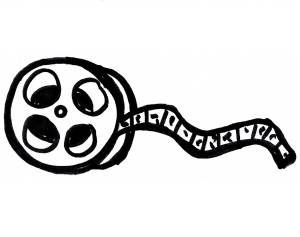
Just two weeks ago, we lost a cinematic great who was often overlooked for his accomplishments as an auteur, perhaps due to his extensive work in genre films. Wes Craven may have made an occasional goofy trifle like a Shocker or a Swamp Thing, but his more accomplished films have unmistakably reshaped the horror landscape in a significant way. I don’t have much of a stomach for them myself, but his early works The Hills Have Eyes & The Last House on the Left rang out like the enraged, too-believable battle cries of a deeply disturbed mind eager to unleash its violent cravings upon the world at large. Honing in that anger for something more purposeful & universally palatable, Craven later scared the every living shit out of mainstream audiences with A Nightmare on Elm Street, which did for the simple act of falling asleep what Jaws did for nightswimming. Craven’s instantly infamous Freddy Krueger creation, brought to disturbingly vivid life by actor Robert Englund, would’ve been enough to coast on for the rest of the director’s life, but instead Craven broke out into more surreal territory with The Serpent & The Rainbow, political satire in The People Under the Stairs, and the very nature of horror as a genre in the meta franchise Scream, among other projects. Craven was an inventive fella, to put it mildly. He was enthusiastic about exploring new, strange ideas that would allow his demented id to escape from his mild-mannered exterior, scaring his audience while simultaneously challenging them in unexpectedly intellectual ways, the latter being something a lot of horror peddlers don’t bother with often enough.
My personal favorite Wes Craven film is 1994’s New Nightmare. It’s not his scariest, nor his most tightly-controlled work, but it is an incredibly smart picture that manages to bridge the gap between the dream-logic horror of A Nightmare on Elm Street with the meta genre reflection of the soon-to-come Scream franchise. Wes Craven’s New Nightmare is a perfect way to remember the filmmaker for all he accomplished, not only because it marries those two defining moments of his career in a single picture, but also because he plays a role in the film as a fictionalized version of himself. The Scream franchise introduces its meta context by having the typical bonehead slasher victims be atypically self-aware of classic horror film tropes that usually lead to violent deaths, allowing for them to make commentary on the very film that they populate (eventually with their lifeless bodies). However, thanks to the dream logic of A Nightmare on Elm Street, New Nightmare allows itself even more free rein with its meta context. The movie itself is about the making of another Freddy Kruger picture, a cursed production that blurs the lines between reality & nightmare and free will & scripted fiction to the point where it’s near impossible to tell the difference between a character being awake, getting trapped in Freddy’s playground of the subconscious, or, worse yet, living out one of Wes Craven’s screenplays.
Set on the 10th anniversary of the original Freddy Krueger picture, New Nightmare stars Heather Langenkamp, who played the protagonist Nancy in the original Nightmare on Elm Street, as Heather Langenkamp, who played the protagonist Nancy in the original Nightmare on Elm Street. As the anniversary of the film draws near, threatening phonecalls (often accompanied by Earthquakes) that impossibly seem to be from Freddy Krueger himself torment the poor actress, establishing a mood of dread very early in the picture. The strange thing is that Langenkamp is good friends with Robert Englund, her colleague who portrays Krueger in the movies. Englund, playing himself (and Freddy, of course), is portrayed as a genteel dude here, spending his days idly painting in the sun room of a mansion undoubtedly funded by the success of the Elm Street films, a far cry from the undead homicidal maniac he embodies with Freddy. As mentioned above, Wes Craven also plays himself in New Nightmare. He explains to Heather that he’s been working on a script (or a “nightmare in progress” as he calls it) for a new Elm Street picture as a means to stop Krueger from becoming “real”. According to Craven, because Freddy was killed off in the 6th installment of the franchise (Freddy’s Dead: The “Final” Nightmare), he has been set free like a genie from a bottle, now able to manifest in real life, causing real havoc. The only way to stop Freddy, Craven explains, is to make another picture, an ordeal Heather is very reluctant to suffer.
There is so much to enjoy in New Nightmare & the film really does at times feel like all of the best elements of Wes Craven’s aesthetic conveniently gathered in one package. Striking an unnerving artificiality from the get go, the whole film feels like a constant dream state, a feeling that’s only amplified as the walls between the conscious & the subconscious, as well as the walls between the movie & the movie within the movie, begin to break down into a mess of Freddy Krueger themed chaos. As for Krueger himself, he actually doesn’t appear in his full form for much of the film. He’s more of a disembodied idea than a physical threat, often appearing solely as a clawed glove & at one point literally becoming larger than life by appearing in the clouds above a freeway. Heather’s horrified reaction to Krueger’s new, true-life form & his adoring fans’ gushing at his publicity appearances call into question Craven’s own thoughts on his creations & their fandom, particularly with the rougher work of films like The Last House on the Left. Otherworldly landscapes of bedsheets & subconscious dungeons recall the POV of a child’s imagination Craven so well captured in The People Under the Stairs. Although the dream state reflections of The Serpent & The Rainbow and the original Elm Street as well as the meta reflections of the Scream movies may have been more thoroughly solidfied in his other pictures, it’s nice to see those two worlds bounce off each other in such a satisfying way here.
Wes Craven’s New Nightmare might not be his most technically accomplished film & it’s doubtful that it’ll be the one he’s most remembered for, but it holds a special place in my heart as a sum of the accomplishments of a director I grew up loving & fearing. When I heard the recent news that the incredibly gifted director had died, it was the first film I thought to revisit as a means of remembrance. It only helps that the director himself makes an appearance in the film to weigh in on the magical nature of filmmaking, directly referencing his personal compulsions to create, the often hellish compulsions that drive anyone to create, and the ways art can take on a life of its own outside its creator’s will or control. Besides being a great film as well as a reflection on the nature of horror as a genre & art as an enterprise, New Nightmare is a solid means to commemorating the accomplishments of a great director who is unfortunately no longer with us. He will undoubtedly be missed, but we’ll always have great films like New Nightmare to remember him by. Much like his creation Freddy Krueger, Craven lives on.
-Brandon Ledet












